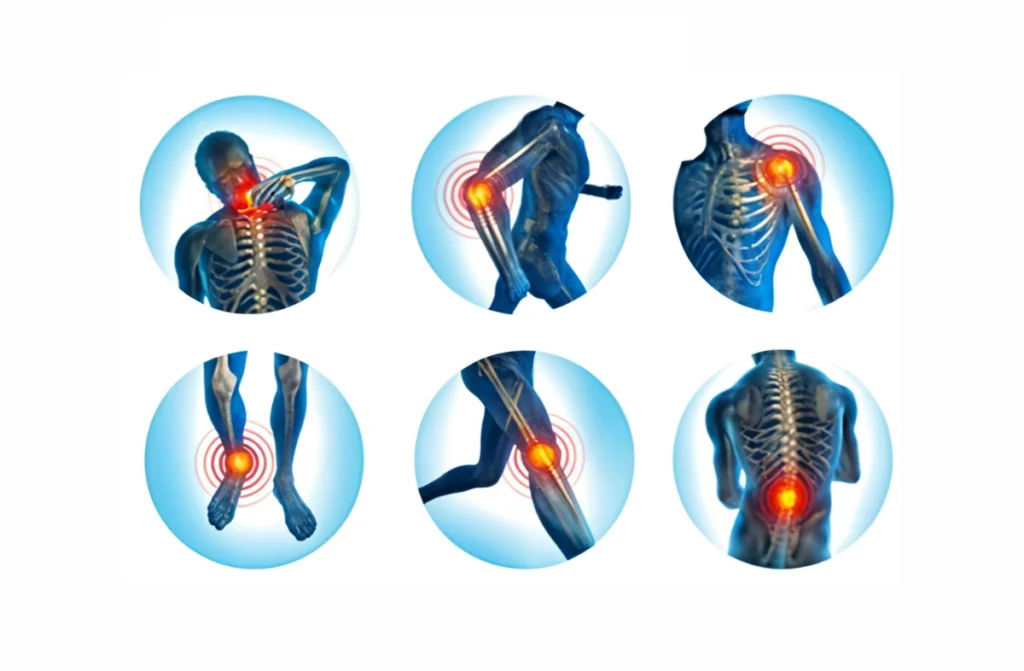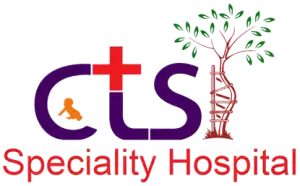Orthopedic Physical Therapy is a specialized field of physical therapy that focuses on improving mobility, strength, and function in individuals affected by orthopedic conditions. This type of therapy is used to treat injuries or conditions affecting bones, muscles, joints, tendons, ligaments, and nerves. If you are experiencing pain or difficulty moving due to an orthopedic issue, orthopedic physical therapy can help you regain function and relieve pain.
At CTS Hospital, our team of skilled physical therapists works closely with patients to develop tailored treatment plans that promote healing and improve quality of life. In this article, we will explore What Is Orthopedic Physical Therapy? and how it benefits those struggling with orthopedic conditions.
What Is Orthopedic Physical Therapy?
Orthopedic Physical Therapy is a treatment designed to restore movement and reduce pain in patients suffering from musculoskeletal issues. It is commonly used for people with injuries or conditions related to the muscles, bones, or joints. The primary goal of this therapy is to enhance the body’s ability to function and move properly. Types of orthopedic physical therapy include manual therapy, exercises, stretching, strengthening, and modalities like heat or cold treatments. Each approach aims to reduce pain, improve flexibility, and restore strength. At CTS Hospital, we offer comprehensive orthopedic physical therapy services tailored to individual needs, helping patients recover effectively.

How Orthopedic Physical Therapy Works
Orthopedic Physical Therapy is based on scientific principles of anatomy, physiology, and movement. The treatment works by focusing on exercises and manual techniques that improve muscle strength, flexibility, and joint mobility. Key elements of orthopedic physical therapy include:
- Assessment: The therapist evaluates your condition to understand the issue.
- Exercise Therapy: Specific exercises are designed to improve strength and range of motion.
- Manual Therapy: Techniques such as massage or joint manipulation may be used.
- Modalities: Use of ice, heat, or electrical stimulation to manage pain.
By following a personalized plan, orthopedic physical therapy addresses pain and functional limitations, helping individuals recover from injury or surgery.

What Types of Treatments Are Used?
Orthopedic physical therapy employs various treatments depending on the condition. Types of orthopedic physical therapy include:
- Therapeutic Exercises: To improve strength and range of motion.
- Manual Therapy: Techniques like joint mobilization and soft tissue manipulation.
- Electrotherapy: The use of electrical stimulation for pain relief.
- Hydrotherapy: Exercise in water to reduce stress on joints.
- Stretching and Flexibility: Focuses on improving joint movement.
Each treatment is customized to address the patient’s specific needs, helping them recover faster and more effectively.
Common Orthopedic Conditions Treated
Orthopedic physical therapy is used to treat a variety of musculoskeletal conditions. Some common conditions include:
- Arthritis: Both osteoarthritis and rheumatoid arthritis.
- Fractures: Recovery after bone fractures around knee.
- Sprains and Strains: Injuries to ligaments and muscles.
- Tendonitis: Inflammation of tendons, especially in the shoulder or knee.
- Back and Neck Pain: Including issues like sciatica or herniated discs.
- Post-Surgical Recovery: Rehabilitation after surgeries like joint replacement.
Orthopedic physical therapy helps individuals suffering from these conditions improve mobility, reduce pain, and regain strength for better functionality.
Benefits of Orthopedic Physical Therapy
The benefits of orthopedic physical therapy are numerous, including:
- Pain Reduction: Helps manage and reduce chronic or acute pain.
- Improved Mobility: Enhances movement, allowing for daily activities.
- Strengthening: Builds muscle strength to support injured areas.
- Prevention of Future Injuries: Reduces the risk of recurring injuries.
- Faster Recovery: Helps accelerate recovery after surgery or injury.
By following a personalized physical therapy plan, patients can see significant improvements in their overall quality of life.
Understanding the Difference: Orthopedic Therapy vs Physical Therapy
| Aspect | Orthopedic Therapy | Physical Therapy |
|---|---|---|
| Definition | Orthopedic therapy focuses on treating conditions related to the musculoskeletal system. | Physical therapy is a broader approach that addresses movement issues in the body. |
| Scope of Treatment | Specifically designed for bones, joints, ligaments, tendons, and muscles. | Can involve neurological, cardiovascular, and orthopedic rehabilitation. |
| Conditions Treated | Fractures, arthritis, tendonitis, sports injuries, post-surgical recovery. | Stroke recovery, balance problems, chronic pain, orthopedic injuries, and more. |
| Treatment Techniques | Manual therapy, joint mobilization, strength training, post-op care. | Exercise therapy, stretching, manual therapy, electrical stimulation. |
| Specialization | Provided by therapists with advanced knowledge in orthopedics. | May include specialists in geriatrics, pediatrics, neurology, or orthopedics. |
| Goals of Therapy | Restore joint function, reduce pain, improve mobility post orthopedic trauma. | Improve overall movement, function, and quality of life. |
| Example Scenario | Post knee replacement rehabilitation. | Balance training after stroke or general back pain relief. |
When considering Orthopedic therapy vs physical therapy, it’s essential to know your condition. If your issue is strictly related to bones and joints, orthopedic therapy may be best. For broader movement or recovery needs, physical therapy could be more suitable. Always consult a specialist to decide the right path in the Orthopedic therapy vs physical therapy discussion.
Techniques and Approaches in Orthopedic Physical Therapy
Orthopedic physical therapy uses a range of techniques to address pain and dysfunction. These include:
- Manual Therapy: Includes soft tissue mobilization and joint manipulation.
- Exercise Therapy: Tailored exercises to strengthen muscles and improve movement.
- Modalities: Heat, cold, and electrical stimulation for pain management.
- Stretching Techniques: To improve flexibility and prevent stiffness.
- Balance Training: Focused on improving stability and reducing fall risk.
By using a combination of these techniques, orthopedic physical therapy helps individuals achieve better health outcomes.
Therapeutic Exercises and Stretching
Therapeutic exercises and stretching are core components of orthopedic physical therapy. These exercises are specifically designed to:
- Increase Strength: Build muscle around joints to provide support.
- Improve Flexibility: Restore range of motion in affected joints.
- Enhance Endurance: Increase the ability to perform daily tasks without fatigue.
- Correct Posture: Improve body alignment to reduce stress on joints.
A tailored exercise and stretching program can significantly speed up recovery and prevent further injury.
Physical Therapy vs Surgery or Medication
When it comes to treating orthopedic issues, Orthopedic Physical Therapy can often be an alternative or complementary treatment to surgery or medication.
- Non-invasive Treatment: Unlike surgery, physical therapy does not require incisions or lengthy recovery periods.
- Pain Management: Physical therapy can manage pain without the need for pain medications.
- Faster Recovery: Physical therapy can accelerate recovery from surgery by strengthening muscles and improving movement.
In many cases, physical therapy can delay or even avoid the need for surgery, offering a cost-effective and less invasive solution.
How Long Does Recovery Take?
The recovery time in orthopedic physical therapy varies depending on the condition, severity of the injury, and patient’s overall health.
- Mild Injuries: Can take a few weeks to recover.
- Moderate Injuries: May require 6-8 weeks of physical therapy.
- Post-Surgery Rehabilitation: Can take several months to fully recover.
Consistency and adherence to the therapist’s instructions play a critical role in the recovery timeline.
Challenges with Physical Therapy in Orthopedic Care
While orthopedic physical therapy offers many benefits, there are also challenges, including:
- Patient Compliance: Following prescribed exercises outside of therapy sessions can be difficult.
- Pain: Some patients may experience discomfort during certain treatments.
- Time Commitment: Attending multiple therapy sessions may be inconvenient.
- Financial Costs: While often covered by insurance, physical therapy may involve out-of-pocket expenses.
Despite these challenges, the benefits of orthopedic physical therapy often outweigh the drawbacks.
How to Find an Orthopedic Physical Therapist
Finding a qualified orthopedic physical therapist is crucial for effective recovery. You can start by:
- Consulting Your Doctor: Your primary care physician or orthopedic specialist can provide recommendations.
- Researching Clinics: Look for reputable clinics, such as those at CTS Hospital.
- Checking Credentials: Ensure the therapist is licensed and specialized in orthopedic care.
- Patient Reviews: Reading reviews can provide insight into the therapist’s effectiveness.
At CTS Hospital, Dr. Prakash Selvam and our team of orthopedic specialists can help guide you to the best physical therapy options for your needs.
Conclusion
Orthopedic Physical Therapy plays a vital role in helping individuals recover from musculoskeletal injuries and conditions. Whether you are recovering from surgery, dealing with chronic pain, or looking to regain function after an injury, Orthopedic Physical Therapy offers effective treatment options. At CTS Hospital, our expert team provides personalized care to ensure the best possible outcomes for our patients. If you are wondering What Is Orthopedic Physical Therapy? or how it can benefit you, reach out to our specialists today and start your journey toward better health.
